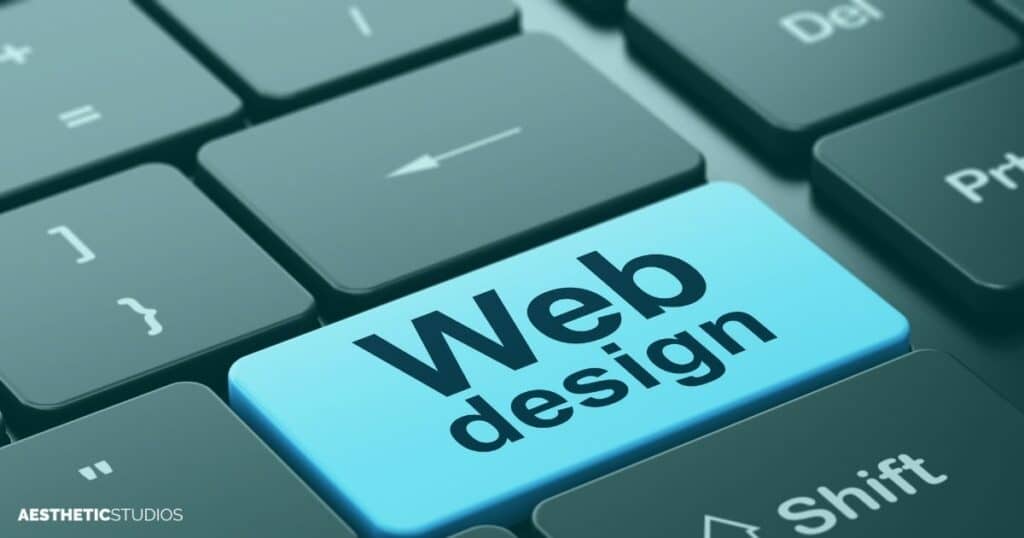Web Design Made Easy: Tips for Creating a Professional Website

Have you ever felt overwhelmed by the thought of designing a website? Whether you’re starting from scratch or looking to revamp an existing site, the process can seem daunting. You might wonder where to begin, what tools to use, and how to ensure your site looks professional. But don’t worry, you’re not alone. Web design isn’t just about making a site look good. It’s about creating an experience that’s engaging and easy to navigate. And the good news? You don’t need to be a tech wizard to design a great website. With a clear understanding of the basics and a few practical tips, you can build a site that not only looks fantastic but also functions seamlessly. In this article, you’ll learn exactly how web design works, from the essential elements of good design to the step-by-step process of creating a website. By the end, you’ll have the knowledge and confidence to design a website that truly represents your vision and engages your audience. What is Web Design? Web design is the process of creating the visual layout, user interface, and overall aesthetic of a website. It involves planning and conceptualising elements like text, images, graphics, and interactive features to create a cohesive and functional website. Definition and Importance At its core, web design is about problem-solving and communication. A well-designed website effectively communicates its message, engages users, and achieves its goals—whether that’s providing information, selling products, or building a brand. Why is Web Design Important? First Impressions Matter Your website is often the first interaction people have with your brand. A well-designed site creates a positive impression and encourages visitors to explore further. User Experience Good web design ensures that your site is easy to navigate, which enhances user satisfaction and retention. Poor design can frustrate users and drive them away. Trust and Credibility A professional-looking website builds trust and credibility with your audience. An outdated or poorly designed site can make users question your legitimacy. Difference Between Web Design and Web Development It’s essential to understand the distinction between web design and web development, as both are crucial to creating a successful website. Web Design: Focuses on Aesthetics Web design is concerned with the visual aspects of the website. This includes layout, colour schemes, typography, and overall style. User Interface (UI) Design Web designers create the look and feel of the site, ensuring that the interface is user-friendly and visually appealing. Tools Designers often use tools like Adobe XD, Sketch, Figma, and Photoshop to create their designs. Web Development: Focuses on Functionality Web development involves turning the design into a functional website. This includes writing code and building the backend infrastructure. Front-End and Back-End Front-end developers handle the part of the website that users interact with, using languages like HTML, CSS, and JavaScript. Back-end developers manage server-side aspects, databases, and application logic. Tools and Technologies Developers use various programming languages and frameworks like React, Angular, Node.js, and PHP. Understanding both web design and web development helps in appreciating how a website is created from concept to completion. While designers focus on how the site looks and feels, developers ensure it works seamlessly and efficiently. Key Elements of Web Design To create a website that is both visually appealing and user-friendly, you need to understand the key elements of web design. These elements form the foundation of any effective website and include visual design principles, user experience (UX) design, user interface (UI) design, and responsive design. Visual Design Principles Colour The choice of colours can significantly impact the mood and usability of your website. Use a colour scheme that aligns with your brand and is visually harmonious. Ensure sufficient contrast between text and background to enhance readability. Typography The fonts you choose should be legible and consistent throughout your site. Use a combination of fonts to create a hierarchy and guide the reader’s attention, but avoid using too many different fonts as it can create visual clutter. Layout A well-organised layout helps guide users through your content. Use grids to create a structured layout, and ensure there is enough white space to make the content breathable and easy to read. User Experience (UX) Design UX design focuses on how users interact with your website. It aims to create a seamless and enjoyable experience for the user. Key aspects of UX design include: Navigation Your website should have a clear and intuitive navigation structure. Users should be able to find what they’re looking for with minimal effort. Loading Speed Slow-loading websites can frustrate users and lead to higher bounce rates. Optimise images and other elements to ensure your site loads quickly. Accessibility Your website should be accessible to all users, including those with disabilities. Use alt text for images, provide transcripts for audio content, and ensure your site can be navigated using a keyboard. User Interface (UI) Design UI design is about the look and feel of your website’s interface. It involves designing buttons, menus, and other interactive elements. Key principles of UI design include: Consistency Keep the design elements consistent throughout your site. This includes colours, fonts, and button styles. Feedback Provide visual or auditory feedback for user actions. For example, buttons should change appearance when clicked to show they’ve been activated. Simplicity Avoid clutter and keep the interface as simple as possible. Users should be able to understand and interact with your site without confusion. Responsive Design With the increasing use of mobile devices, it’s essential to ensure your website looks and functions well on all screen sizes. Responsive design involves creating a flexible layout that adjusts to different screen sizes. Key aspects of responsive design include: The Web Design Process Designing a website can seem like a daunting task, but breaking it down into manageable steps makes it more approachable. Here’s a comprehensive look at the web design process: Planning Setting Goals Understanding the Audience Creating a Site Map Design Wireframes Mockups Choosing a Design Style Development Turning Designs into a Functional Website Testing Cross-Device Testing



